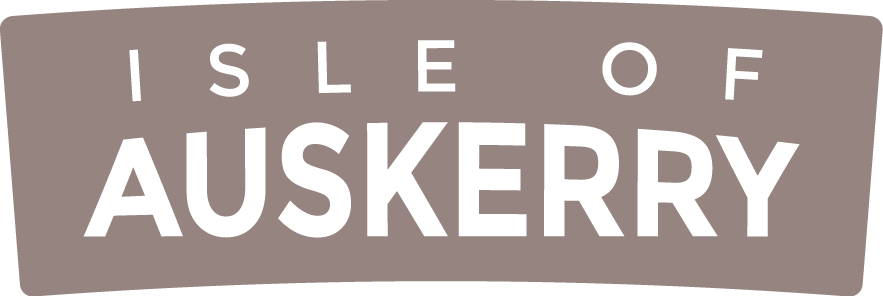It has been such a lovely summer here in Orkney that it is hard to imagine the calm mild weather ever being replaced by strong winds and heaving waves, but nevertheless I am quite sure that they will come soon as we are well into September as I write. In August, our last native wildflower comes out in its yellow profusion, hawkbit. This flower heralds the end of the sheep year as well as the end of the bird breeding season.
We have clipped all the sheep, even the one ewe that evaded all the summer gatherings coming in reluctantly to the pens, but proudly bearing a large and intact fleece. I had great pleasure in removing it on a rare warm September day. Her fleece had just missed the annual wool packing, but it will wait until next year to be shipped.


The annual wool packing takes a good two days, whilst we unwrap all the fleeces and separate them into different colour categories so that I can blend them for our natural yarn shades. They are then weighed in batches and pushed into a large bag called a ‘sheet’. It is Simon’s job to get into the bag and jump up and down on the fleeces so that they pack in as tightly as possible for shipping, and you can imagine, he is pretty greasy by the time he emerges back out of the top of a bag! Once they have been weighed and recorded, and the bags sewn up and labelled, we wait for a calm day when a fishing boat with a crane can heave them onto their deck and take them on the two-hour trip to Kirkwall for us.

The next and last job of the sheep year is to choose our tups or rams from this year’s crop of lambs for next year. We had a fantastic selection of colours and marking to choose from this year, and it is always hard to pick the right ones to breed from. We check their wool for softness and variation of colour; rejecting those with too much hair, as these characteristics give us the high quality fleeces we love. Once chosen, the tup lambs are separated from their mothers to go and live with the older rams and learn to find their place in the male pecking order.
The seabirds have had a very successful year, with record numbers of Puffins, Kittiwakes, Black Guillemots and Terns successfully rearing, but the Fulmars have not had such a good year. However, two fulmars nested successfully near the house; one of them under my bedroom window. We watched the nestling aggressively guarding its nest long after the last feed from his parents, and then witnessed their return, not to feed him, but to encourage him to take off. Very reluctantly he half waddled and flapped his way onto a small rise a metre from his nest, flapped about a bit and returned to the nest area. We went for a cup of tea and returned to find that, literally, the bird had flown – just like that! I have never actually seen the first flight happen so maybe next year I will be lucky.

I am excited to have booked a stand at our Christmas Fair in November. It will be so lovely to meet some of you face to face again. I hope that you are enjoying these fabulous starry skies we are having at the moment – September can be such a lovely month!
Love from Auskerry

